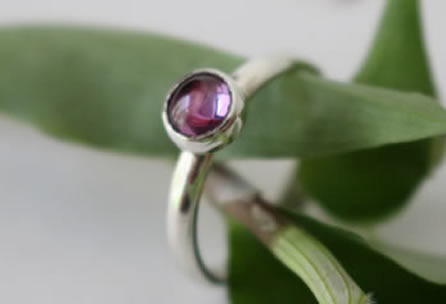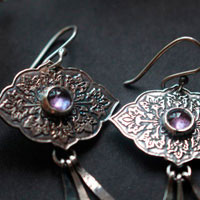- Jewelry
- Inspiration
- Our imagination
- Birthstones
- Celebrating with Eternal Flowers
- Druids and druidesses
- Flower meanings
- History, archeology jewelry
- History and healing properties of metals
- History and healing properties of stone
- Illumination jewelry
- Japanese symbols
- Maya calendar jewelry
- Stone color symbolism
- Stones catalogue
- Wedding anniversaries
- Searches a theme on the site
- Good Deals
- Paintings
- About
- Contact
JEWELRY
- Anklet
- Bracelets
- Brooches
- Cufflinks
- Earrings
- Pendants & Necklaces
- Rings
- Draw your jewelry
- How to clean your jewel
- Metal we used
INSPIRATION
- Our imagination
- Birthstones
- Celebrating with Eternal Flowers
- Druids and druidesses
- Flower meanings
- History, archeology jewelry
- History and healing properties of metals
- History and healing properties stones
- Illumination jewelry
- Japanese symbols
- Maya calendar jewelry
- Stone color symbolism
- Stones Catalogue
- Wedding anniversaries
- Searches a theme on the site
Alexandrite: history, healing properties and lithotherapy

Alexandrite properties

In 1842, Finnish mineralogist Nils Gustaf Nordenskiöld unveiled alexandrite, a gemstone named in honor of Tsar Alexander II. Discovered in the Ural Mountains of Russia, this gem quickly became a dazzling symbol of Tsarist Russia due to its fascinating colors and its association with the imperial dynasty.
Alexandrite is a rare variety of chrysoberyl, renowned for its unique ability to change color depending on the lighting. This phenomenon, known as the "color-change effect," is caused by the presence of traces of chromium in the mineral. Under natural light, alexandrite displays a vibrant blue-green hue, while under incandescent light, it transforms into an intense purplish-red. This dramatic color shift is often described as "emerald by day, ruby by night."
With a hardness of 8.5 on the Mohs scale, alexandrite is a durable gemstone, making it particularly well-suited for jewelry. It is extremely rare, and its price often rivals that of diamonds, especially for stones with vivid colors and a pronounced color change. Beyond its rarity, it is the gem’s ability to capture and reflect multiple facets of light that makes alexandrite a prized jewel among collectors and gemstone enthusiasts.
History, legends and beliefs about the alexandrite
The origin of this gemstone dates back to 1830, when miners at the Tokovaya emerald deposit were astonished to see this green stone, resembling the coveted emerald, turn red in the light of their campfire, only to revert to its green hue in daylight. It was officially presented in 1842, giving it a relatively recent and brief history.
The association between alexandrite and Imperial Russia is deeply rooted in history. Its green and red colors, mirroring those of the Russian military uniforms, made it a symbolic national stone, and it was quickly adopted by the imperial family and aristocracy. This rare gemstone was often set in exclusive jewelry for the tsars and nobles.
Today, the original Russian deposits are nearly depleted, making alexandrite even more precious. New deposits have been found in Brazil, India, Sri Lanka, and Madagascar, but Russian specimens are still considered the highest quality, featuring intense colors and a distinct color-change effect.
Mines: Russia (the best quality), Brazil, India, Sri Lanka, Tanzania, Myanmar, Madagascar and Zimbabwe
Healing properties and benefits of the alexandrite
Throughout the long history of humanity, people have attributed various properties, virtues and healing beliefs to alexandrite. The information presented here is shared from a cultural and historical perspective, in order to illustrate the symbolic relationship that has developed between this stone and different civilizations over the centuries. Like the preceding elements, it is part of our scientific and historical approach. It does not constitute any form of therapeutic or medical recommendation, nor does it reflect our personal beliefs.
- In lithotherapy, alexandrite is recognized for its regenerative properties, both physical and spiritual. Often referred to as the "stone of regeneration," it is renowned for its beneficial effects on both body and mind.
- Alexandrite is known to aid healing after surgeries or prolonged illnesses, helping to restore vital energy and stimulate tissue regeneration, thus contributing to faster recovery.
- It is also believed to have benefits for circulatory health, assisting in blood purification and strengthening the immune system. It is said to be particularly effective for conditions related to the spleen and pancreas.
In addition to its healing virtues, alexandrite symbolizes renewal and change, due to its ability to shift colors depending on the light. This symbolic power is often linked to concepts of rebirth, adaptability, and spiritual transformation.
 Please note that all healing properties attributed to stones come from ancient traditions and various cultural sources. This information is provided for informational purposes only and does not constitute medical advice. In case of any health concerns, it is recommended to consult a qualified professional.
Please note that all healing properties attributed to stones come from ancient traditions and various cultural sources. This information is provided for informational purposes only and does not constitute medical advice. In case of any health concerns, it is recommended to consult a qualified professional.
Alexandrite jewelry samples
To learn more about litotherapy, we recommend you the following books:


















